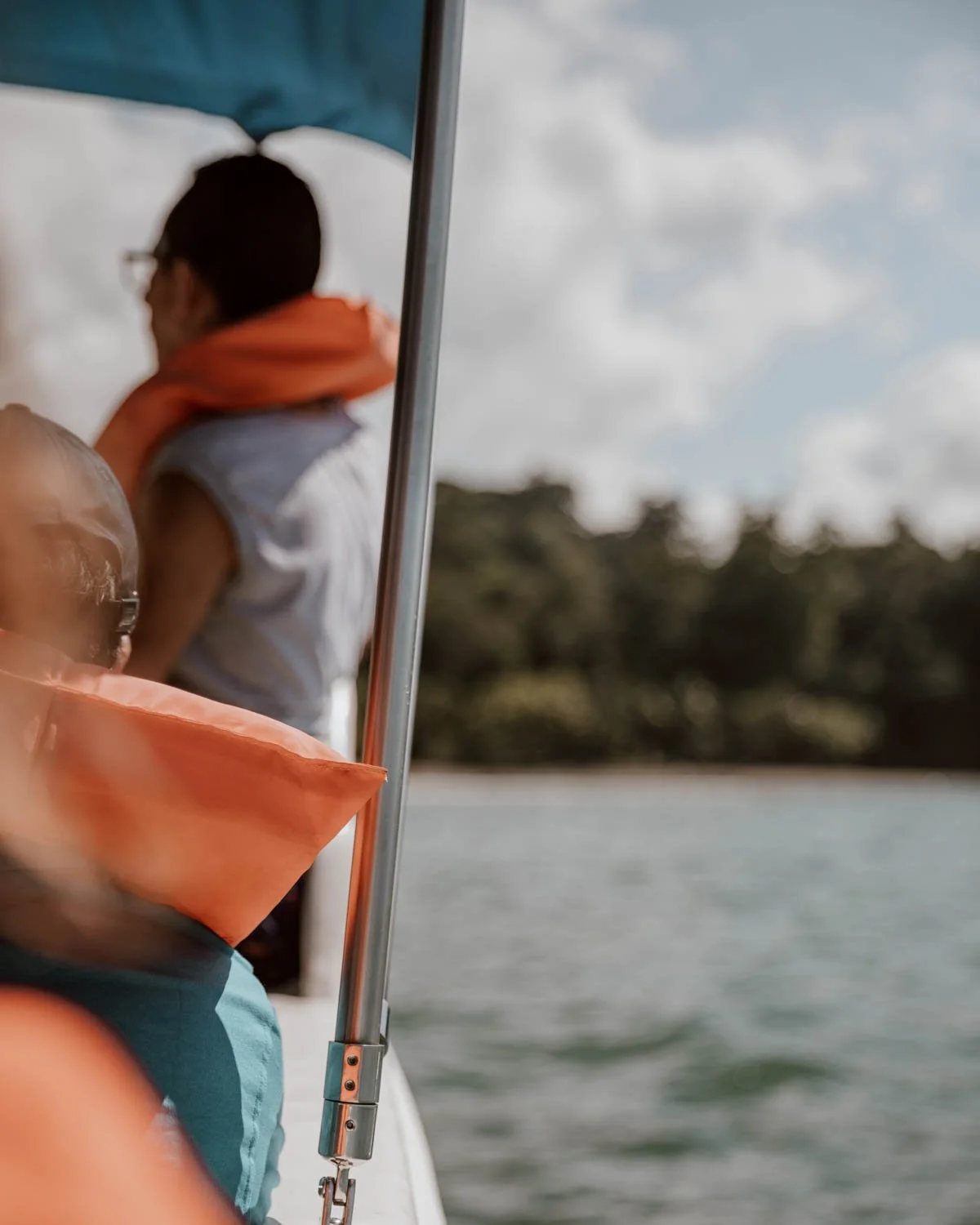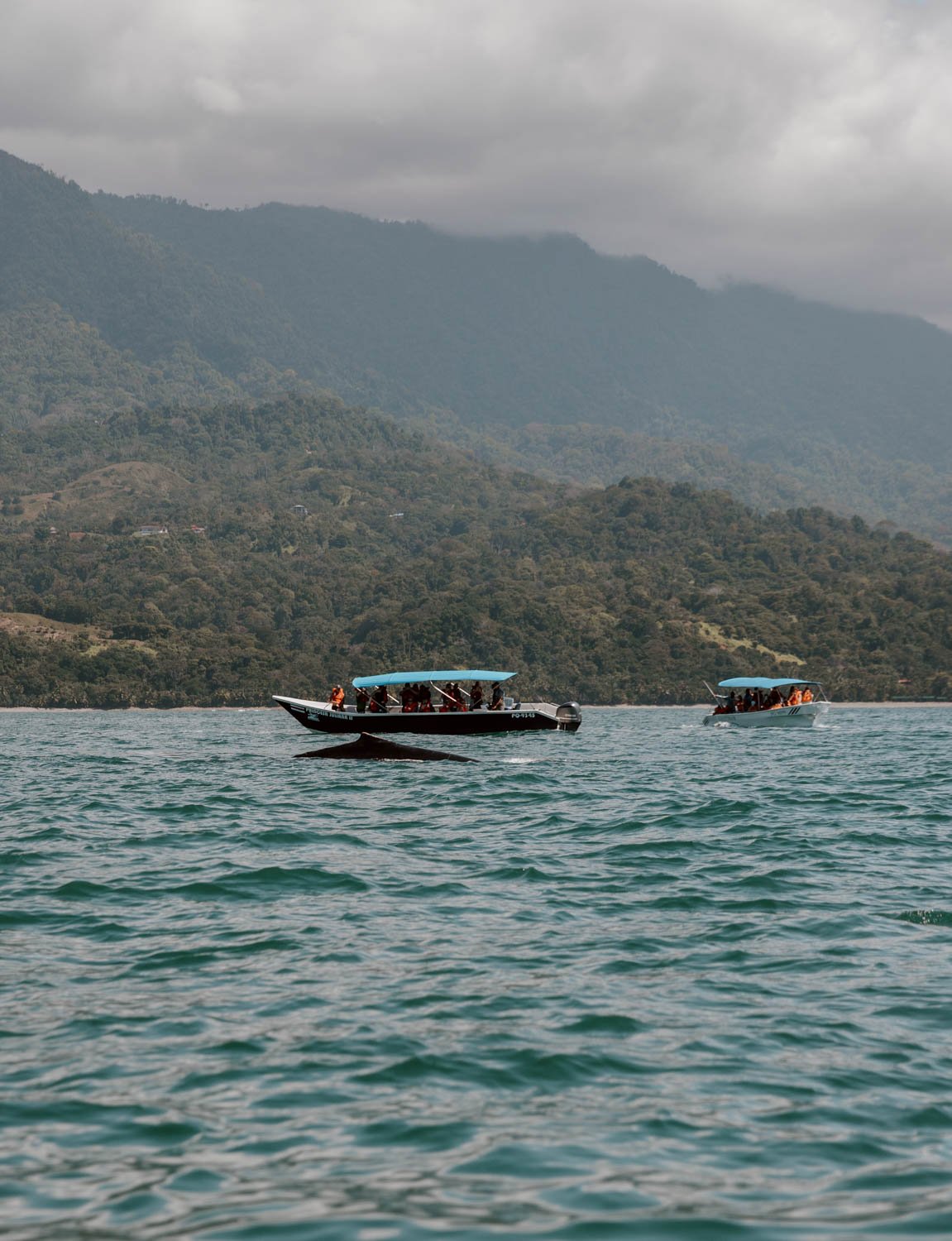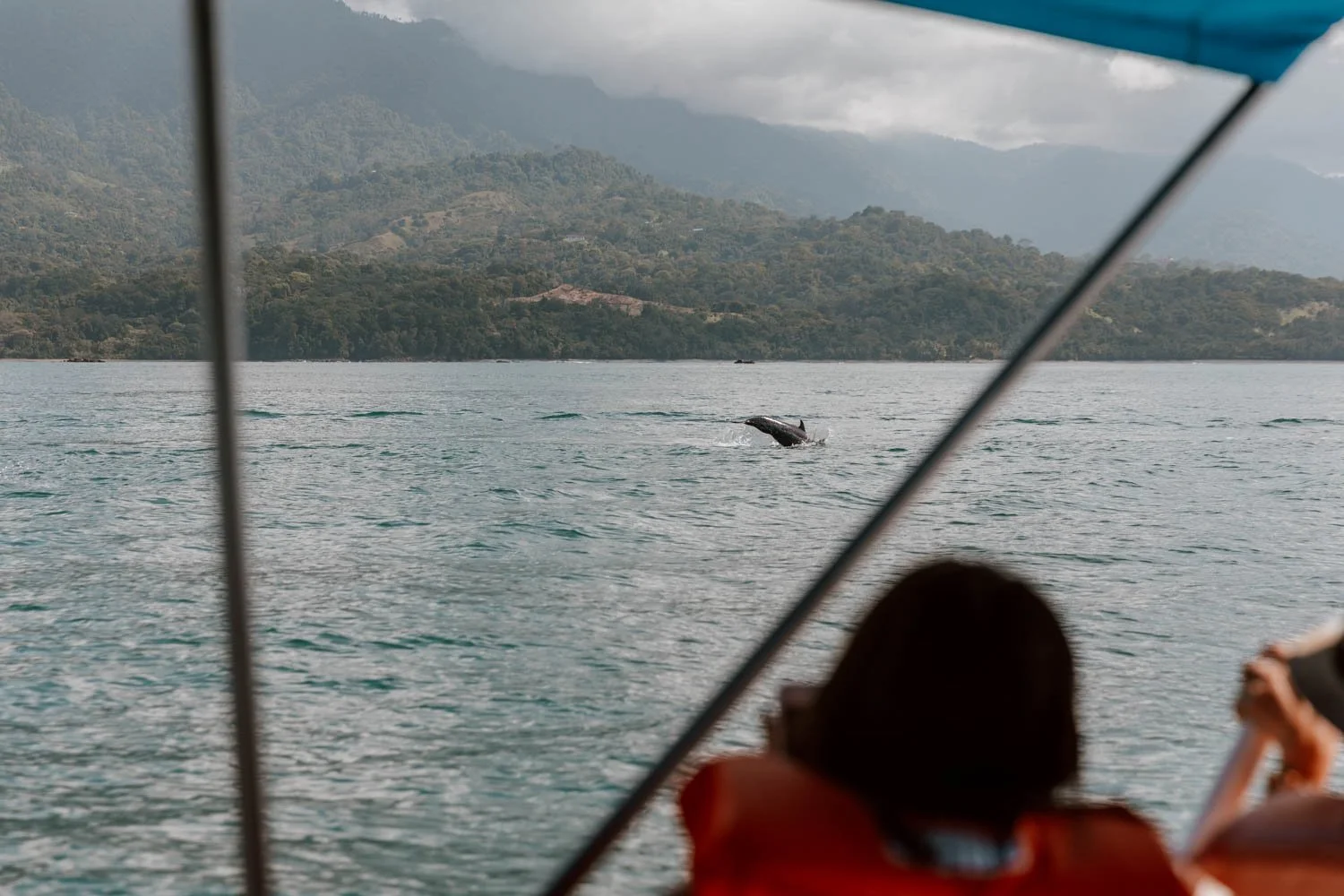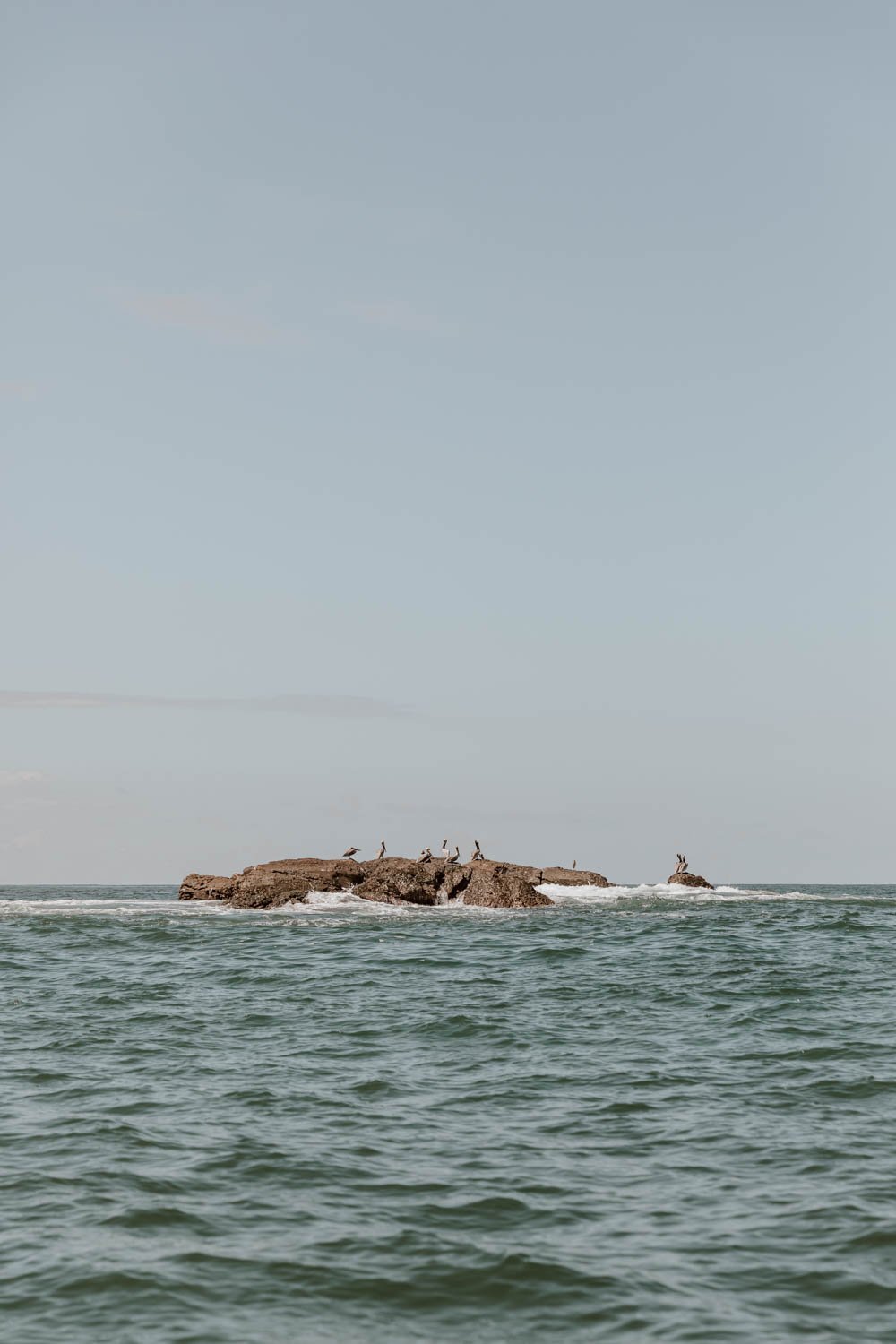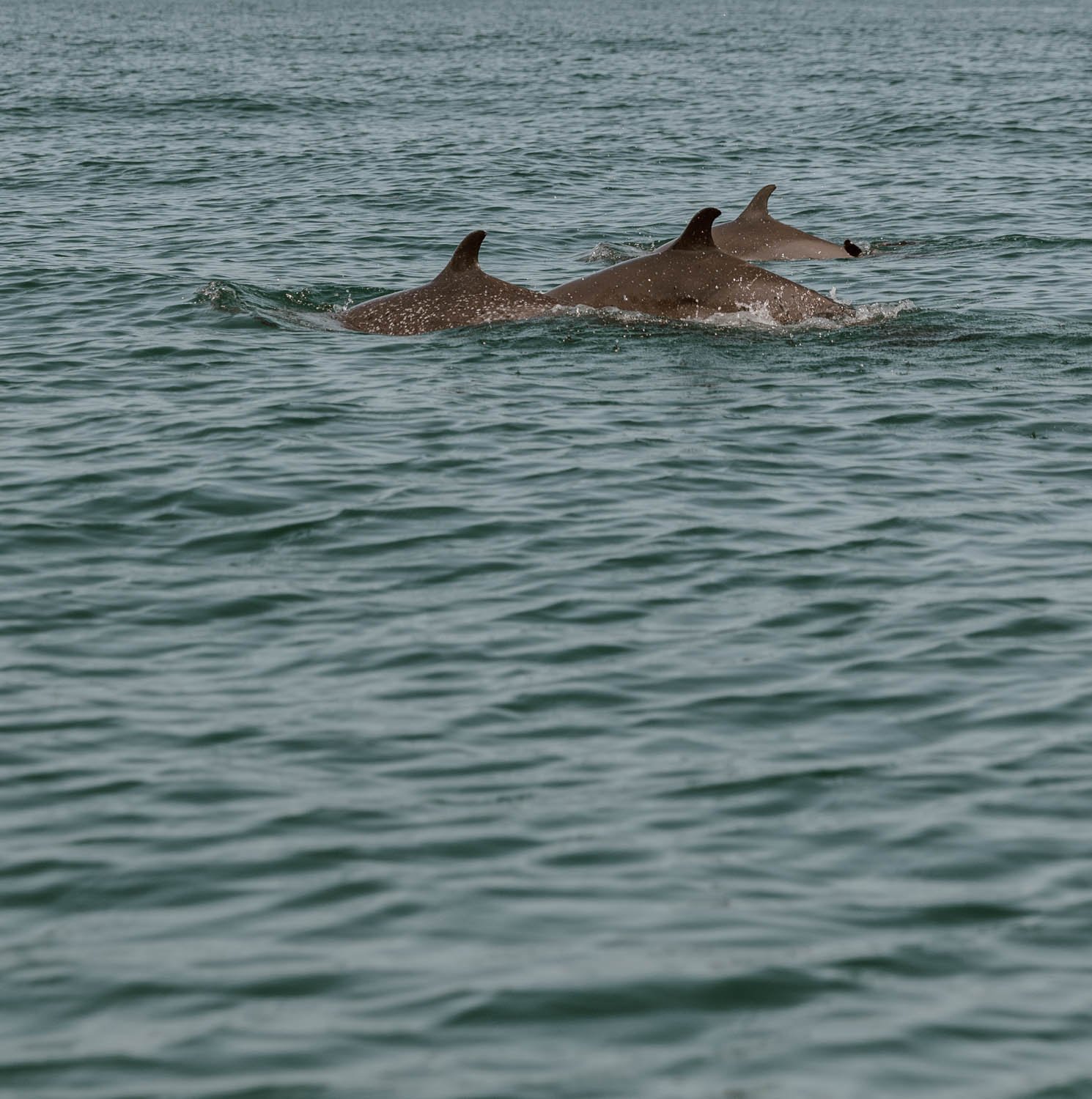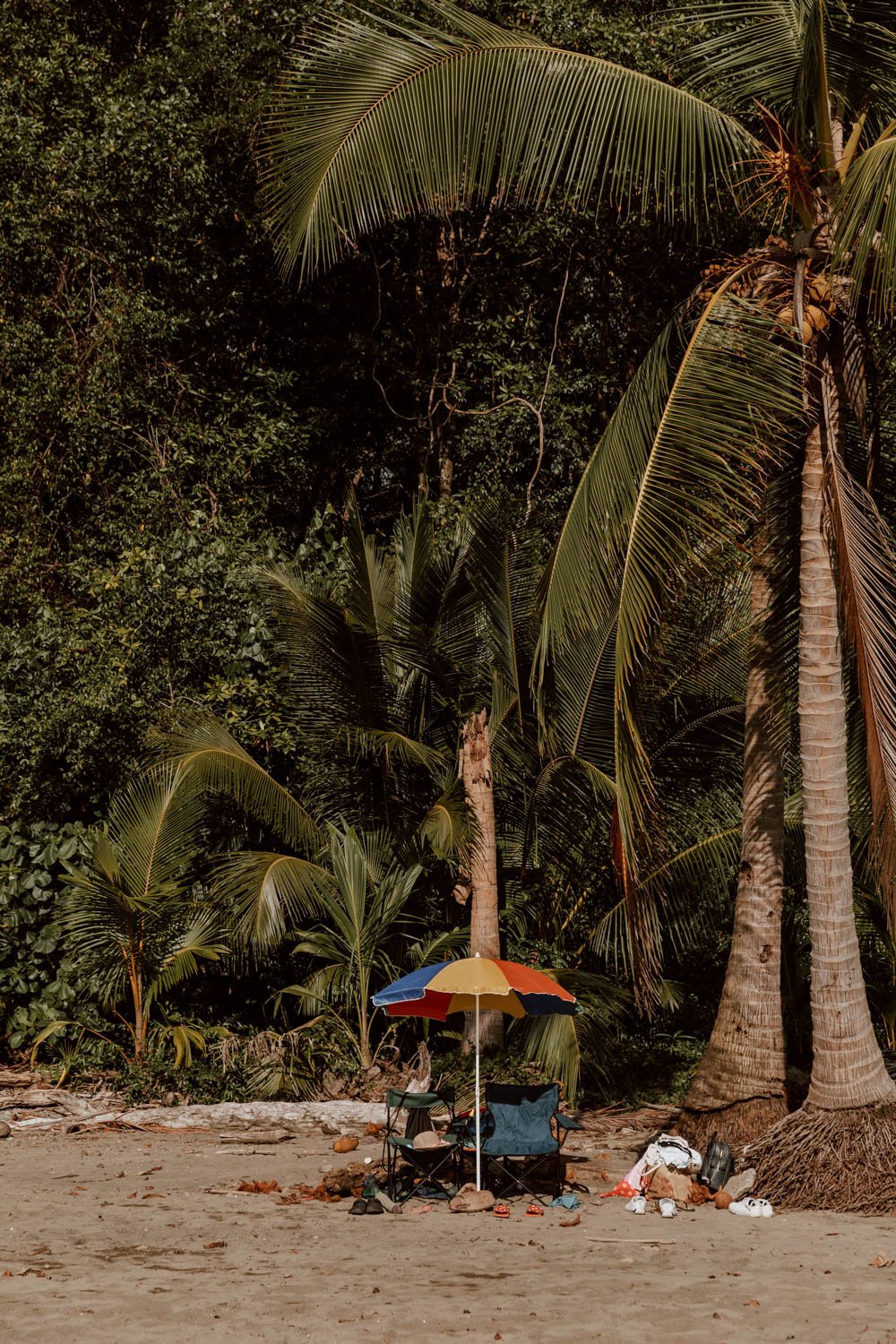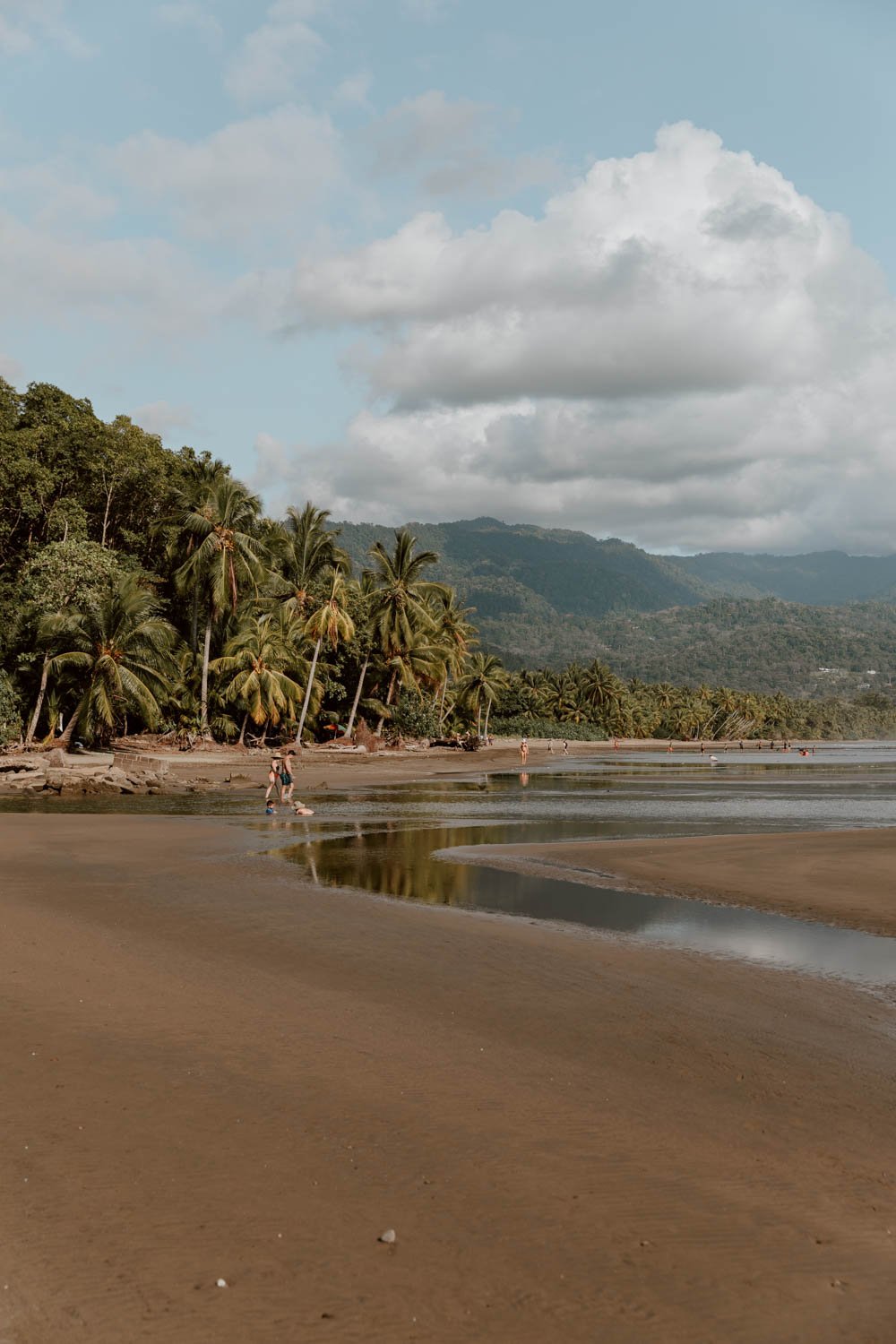Known as the best place to go whale watching in Costa Rica, heading out on a dedicated wildlife-spotting trip is a must do in Uvita. In this guide we cover everything you need to know about arranging a tour there and what to expect.
Updated December 2023
We heard him first.
The high-pitched song that reverberated through the fibreglass hull of our captain's boat.
Waiting, we sat in rapt collective silence. Part wishing his song would never end, but aware that its finality would signal the whale’s return to the surface.
And then, nothing followed by nothing.
Eyes darted across the ripples of blue beyond the boat, willing a grey back to breach - the only issue was, where?
It's difficult to put into words how truly incredible it is to witness an animal that spends most of its life beneath the waves briefly cross into your world. When that animal happens to be as large as a humpback whale, it takes your breath away.
On that morning, the young male breached about half a dozen times before us, unfathomably close and twice with dolphins dancing around him.
And, each time he returned to the blue, he would start to sing again.
We took an awful lot of photos that day - many blurry, too far away, or only catching a glimpse of what was just there - but it's those memories, those moments when we simply sat still and watched as this giant but graceful animal glided across the calm waters of the Pacific that we’ll carry with us for ever.
Whale watching is one of the most popular things to do in Uvita - and the main reason many venture here in the first place. In this guide, we’ve covered everything you need to know about taking a whale watching tour in Uvita - including costs, expectations, seasons, logistics, and whether it’s worth it.
Spoiler alert: it totally is.
whale watching essentials
Where / Uvita, a town on the southern Pacific coast, is the best place in Costa Rica to see whales
When / Two distinct whale-watching seasons in the year.
How / Only possible with a tour in a boat.
Cost / Average tour price is $60-80 USD per person
Book / A tour in advance - this one has great reviews
Whale Watching in Uvita
The laid back beach town of Uvita, and the surrounding Parque Nacional Marino Ballena (Marine Whale National Park), is considered one of the best places in the world to see whales.
So named for the humpback whales that pass along this coast twice a year, Parque Nacional Marino Ballena is a relatively young national park by Costa Rican standards. Created in 1990, it protects over 13,000 acres of ocean, 9 miles of stunning coastline and the largest coral reef along the Pacific coast of Central America.
Unquestionably, and the clue is in its name, this is the best place to go whale watching in Costa Rica!
However, as the mammals generally don't pass close enough to see from the shore, the only way to spot them is to head out on a specialist whale watching tour within the protected waters.
Best Time of Year to See Whales in costa rica
The main reason Uvita is considered such an excellent location is because it has two distinct seasons for whales; in comparison, most other locations around the world are limited to a single one.
The first season here begins in December when the thousand or so whales who spend their summers along the coast of California (Northern Hemisphere Humpback Whales) head south to the warmer waters of Central America. They stay around until April, and are replaced by a group of Antarctic whales (Southern Hemisphere Humpback Whales) who head north to Costa Rica in July and remain until mid-November.
Both groups arrive here to mate, and return to give birth twelve months later, with the warm waters allowing the calves to grow more quickly and providing a safe space with fewer predators i.e. orcas.
The dual seasons means tourists are able to see humpback whales in the waters of Uvita almost all year, but your chances are highest from mid-December to the end of April, and mid-July to mid-November.
Of course, it's still important to double check these dates before booking any tour and nature can never be guaranteed to show up! Many companies don't actually offer whale watching tours during the short off-season to avoid disappointment, but some continue to offer dolphin-spotting trips.
How to Find a Tour Company
Most tour companies are located in the village of Bahia, which is actually separate to Uvita and further complicates the already complicated layout! We talk more about this in our travel guide to Uvita.
To make a reservation, you have three options: take yourself down to Bahia and visit the tour companies personally to enquire about rates, book online and in advance, or book via your accommodation upon arriving in Uvita.
If price is most important, we'd recommend you consider staying in the Bahia area and scouting for the best deal the day before. For everybody else, or those choosing to stay in Uvita or further afield, we recommend booking online or just going with whomever your accommodation recommends.
If you’re in Costa Rica and Uvita for a short holiday or limited amount of time, we recommend booking in advance.
We have heard that you are able to turn up to some offices on the morning and without a reservation. Whilst this may indeed be possible during quieter times of the season and enhance your chances of a discount, we wouldn't really recommend trying it in the December to April high season when boats are often at capacity.
Unfortunately the company we went with (Bahia Ballena) only have a very basic website, so don’t offer online reservations.
The two tours below however have great reviews, last three to four hours, cap group numbers around 15 people, and offer very similar experiences:
Tour One | Three hours, includes entry to the national park. Find out more here.
Tour Two | Three to four hours, includes entry to the national park. Find out more here.
Tour Prices & Hidden Costs
From our personal experience and having spoken with a number of tour providers in Uvita, the price you pay for the tour depends very much upon whether transport to and from your accommodation is included, and whether or not you need to pay entry to the national park in addition.
For example, as we were located a decent distance from the entrance of the park, we arranged the tour with our fantastic treehouse hostel. This cost $65 USD per person but included private taxi transport from our hostel and back again, as well as the national park entrance.
If you peruse the websites of local tour agencies, the going rate seems to be around $80-90 USD, which is similar to prices available on websites like Viator.
When having a chat with several tour companies with offices located in Bahia, we were quoted as low as $55 per person (although this didn’t include entry fee) and as high as $80. Again, if budget is your priority, then your best bet walking around and finding a deal in-person.
An entry ticket to Parque Nacional Marino Ballena costs $6USD per person, plus IVA, and is mandatory for whale watching tours. Most tours include them in the total price, but some may list it separately to appear more competitive (you’ll still need to buy it on the day).
The Tour Timetable
Most tours require you to arrive at the office at 8.30 - 9am, whether this be with your own transport or an included transfer. You will then sign in, sign your life away on a waiver (don't worry, it's standard) and, after a short briefing, get ready to depart.
Some companies may drive you to the national park, but as many of the offices are located within walking distance, most will have you walk.
At the entrance to the national park, you will find a ticket office. If your tour includes your entrance fee, your guide will likely sort this for you. If not, you'll need to purchase it on your way through. As we mention above, this costs $6 USD + IVA, and must be paid by card.
You will then make your way to the boat, which is parked up on the waves and requires a little walk in the water to reach; there’s no jetty or dock.
You can expect to spend at least three full hours out on the boat, which includes a tour along the coast to see other beaches and various rock formations, a decent chunk of time dolphin spotting, followed by at least an hour watching the whales play if there’s a sighting.
After this, there will be some time to snorkel, although this depends on the weather, tides and waves. On our tour, the waves were too strong and visibility poor, so we all just went for a swim instead.
Our boat set off at 9 am and dropped us back off on the beach at 1pm.
Whilst visiting Uvita at the correct time of year means that seeing at least one whale is highly likely, remember the tour companies can obviously make no guarantees, and it may take some time for them to locate a whale. As far as we’re aware they offer no refunds in the event of no sightings.
Our tour included fresh fruit, but no water or other drinks.
Book your place online here.
After the Tour, Enjoy the Beach!
At the end of the tour, you'll be deposited upon Uvita beach and are free to spend the rest of the day as you choose.
Whilst you can of course opt to head out of the park, back into Uvita and on to another activity, as you've already paid to access the Ballena National Park, we'd instead recommend spending the day enjoying its stunning, private paradise beach.
If you're hungry, you can nip outside the park and grab some lunch at one of several nearby restaurants, and then when you're ready to head back, just show your ticket to the guard at the ticket office who will wave you back through.
Do note that the beach closes at 6pm, just after sunset, and when we were there the exit time was strictly enforced.
You can find out more about the beach, plus all our other tips and recommendations for Uvita, in this post: 13 Wonderful Things To Do In Uvita, Costa Rica
What To Bring
As you should be planning on a beach day after your morning in the boat, we recommend you wear and bring the following:
· Wear your swimwear onto the boat, or underneath your clothes.
· Wear flip-flops or sandals, rather than trainers, as you’ll get wet.
· Lots of suncream
· Hat and sunglasses
· Plenty water
· A dry bag if you have one, but a daypack is fine
· Towels and / or sarong for the beach
· Cash and card
Is a whale watching tour in uvita Worth It?
Without a shadow of a doubt, yes.
Whilst we definitely bristled a little at the big upfront cost (a common theme across Costa Rica if we’re honest), seeing wild animals in the wild is one of life's greatest pleasures and an incredible privilege; we'd absolutely pay it again.
However, as two people who were very much budget backpackers during our first visit to Costa Rica, we appreciate that compared to likely daily costs, this tour may be somewhat out of your price range.
So, how do you decide whether to splurge?
We honestly think it depends on how high up the bucket list seeing whales is, and where else you plan on going.
For example, on our boat back from Corcovado National Park, we unexpectedly came across three humpback whales, and the captain was kind enough to let us watch for a good twenty minutes. If you plan on doing any boat-based activities along the southern pacific coast of Costa Rica, when a whale sighting is highly likely, you may wish to hold off paying for a tour in Uvita.
Another thing to note is the time of year that you visit Uvita. Whilst this is potentially an almost year-round destination for whale watching, if you happen to be here at the tail end or beginning of either season, there is a possibility that the whales will elude the captain. This is not their fault, but simply that some whales may not yet have arrived, or have already left.
For some of you reading this, paying for a shoulder season tour may be a budgetary gamble you're not willing to make.
Where Else to Go Whale Watching in Costa Rica?
Whilst Uvita is undoubtedly the best place for whale watching in Costa Rica, there are a few other locations around the country that offer the opportunity:
Drake Bay | As we mentioned above, we actually saw humpback whales in Drake Bay, so can attest to the fact that they definitely holiday in this part of the world! There are a number of dedicated whale watching and dolphin spotting tours available, including this excellent and highly-rated National Geographic six hour tour. The season here is roughly the same as in Uvita.
Gulf of Papagayo | Whales are known to inhabit the waters of the Gulf of Papagayo (in the Guanacaste region) between the months of July to September, and whilst there are no official tours, it's common to spot them on sailing trips.
Tamarindo | Whales are spotted near the seaside city of Tamarindo between August and October. There are relatively few tour operators offering specific whale watching tours (the company that offers this all-inclusive catamaran tour is the exception), but if you happen to be on a sailing trip during these months, you're likely to see them.
Manuel Antonio | This company offers whale watching tours in Manuel Antonio between the months of July, August and September.
Before booking any of the above whale watching tours, it's important to note that the vast majority of any and all tour operators mentioned run the whale watching tours as normal sailing tours outside of the whale watching season - don't assume that just because the tour is running, that you will see whales!



